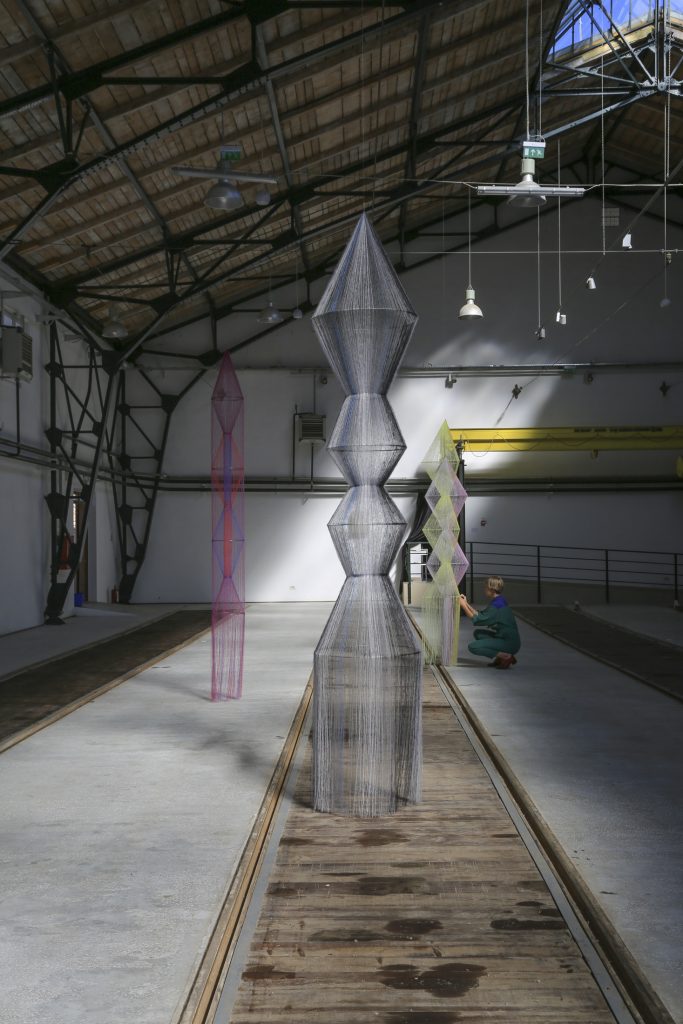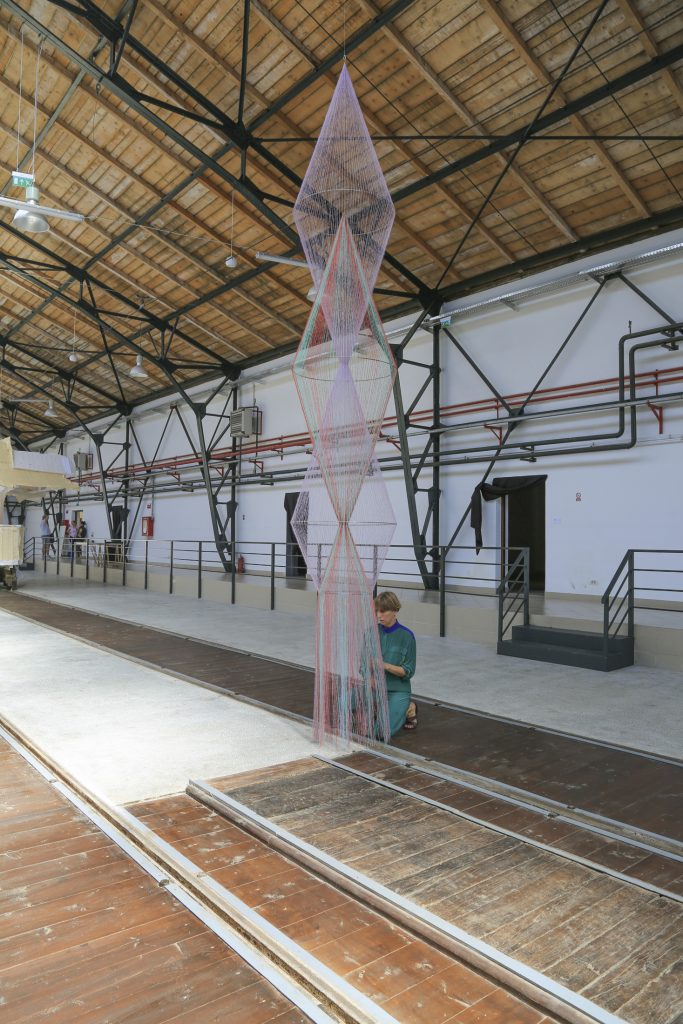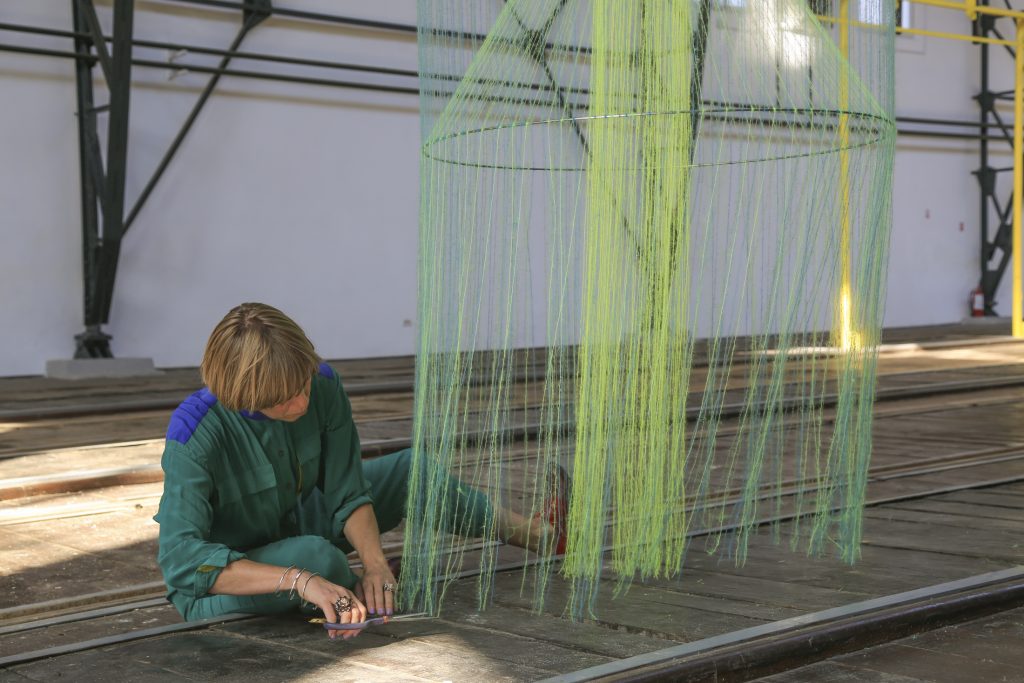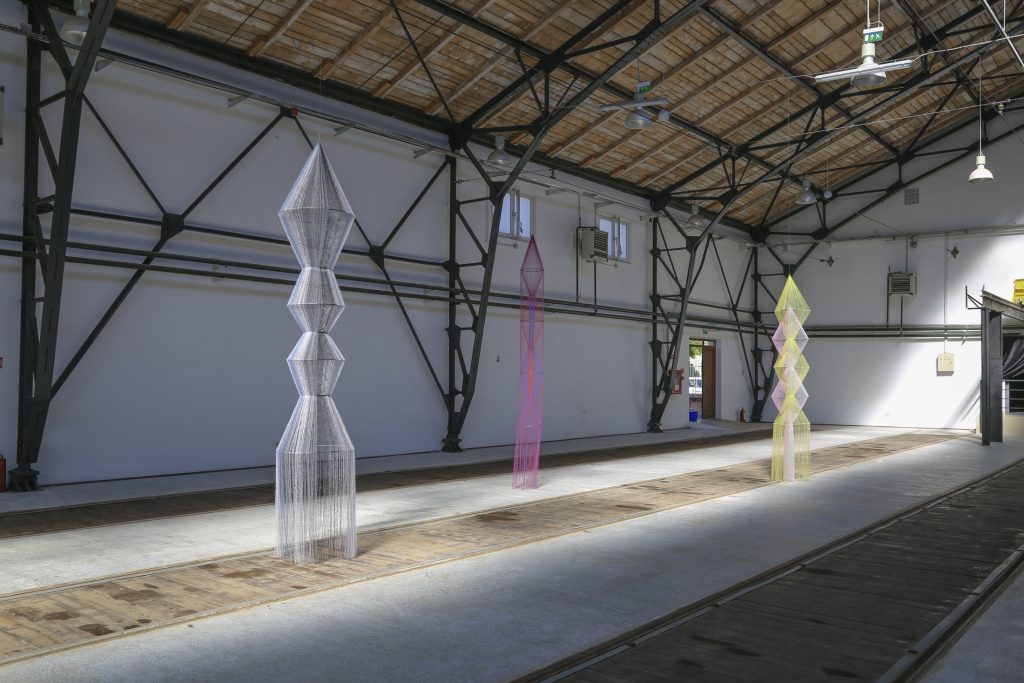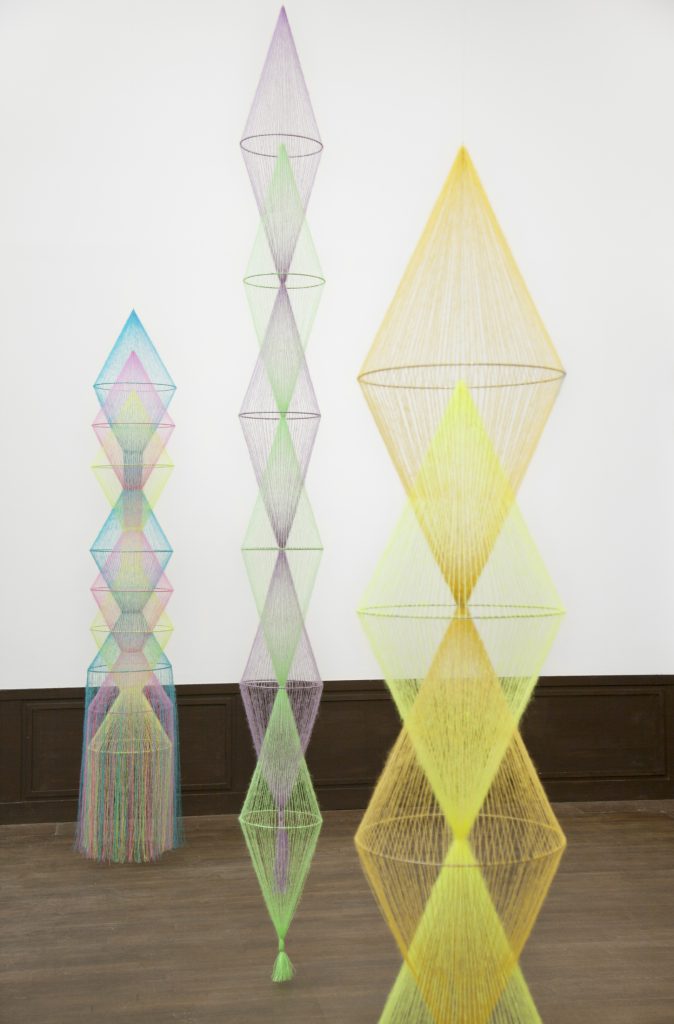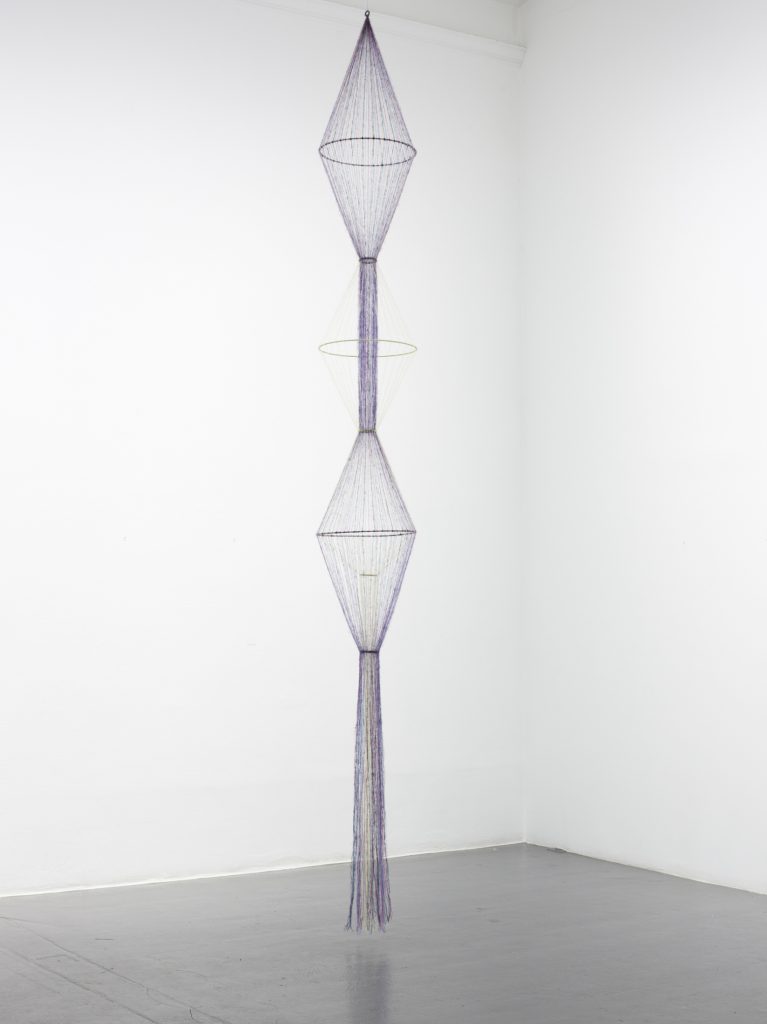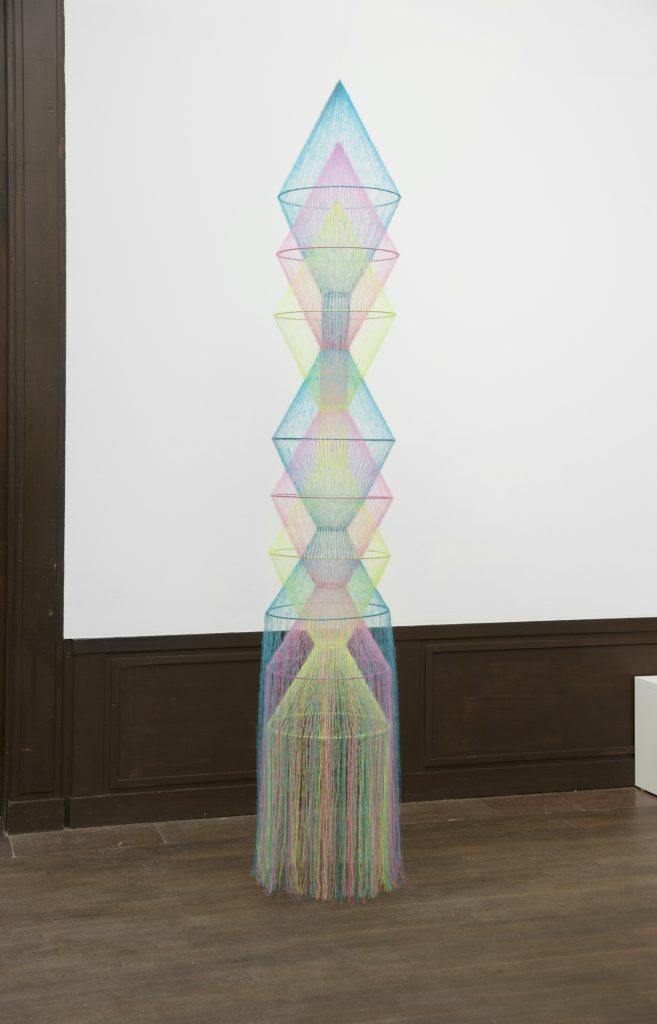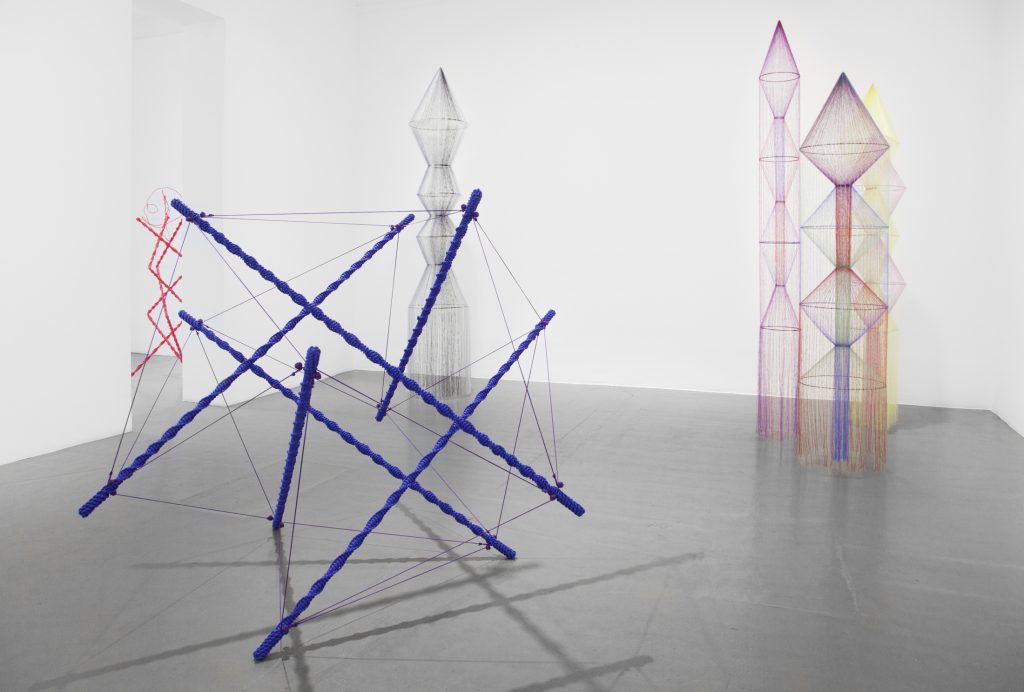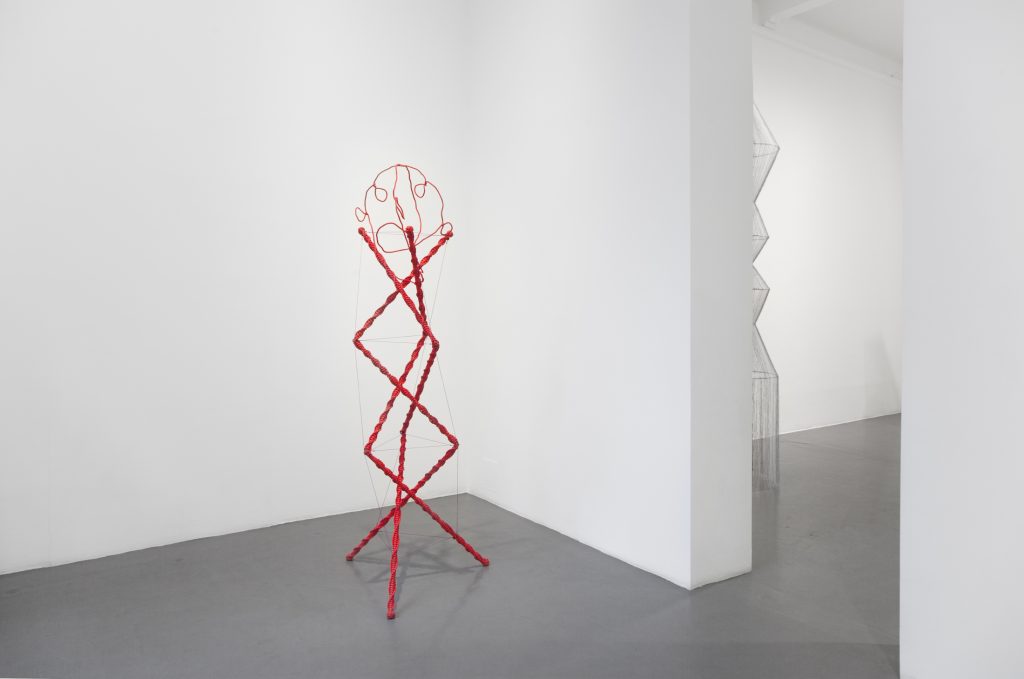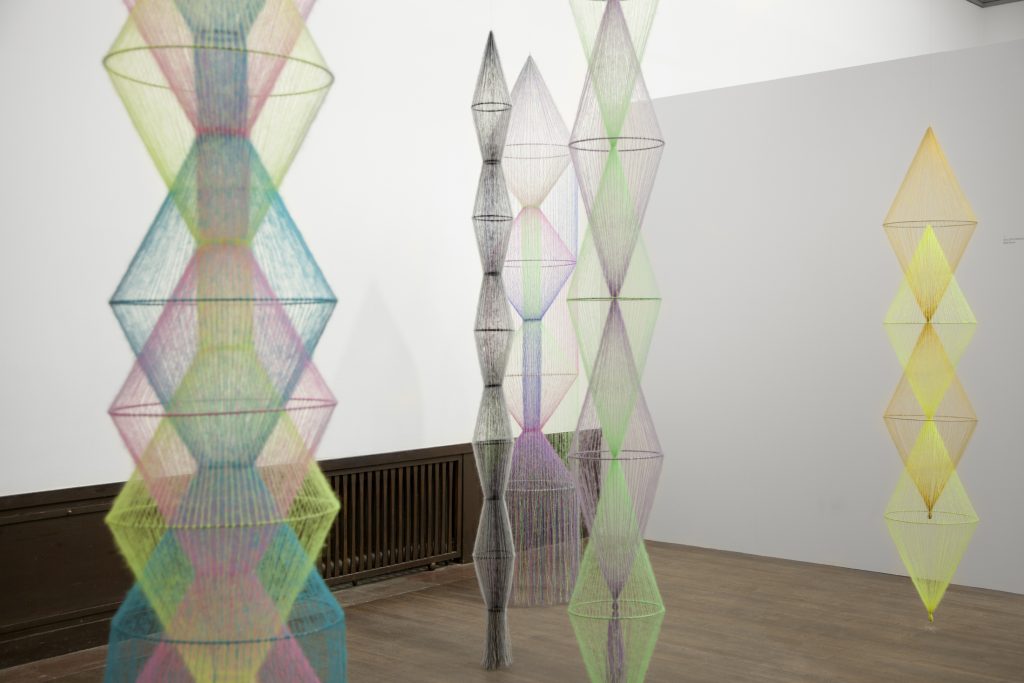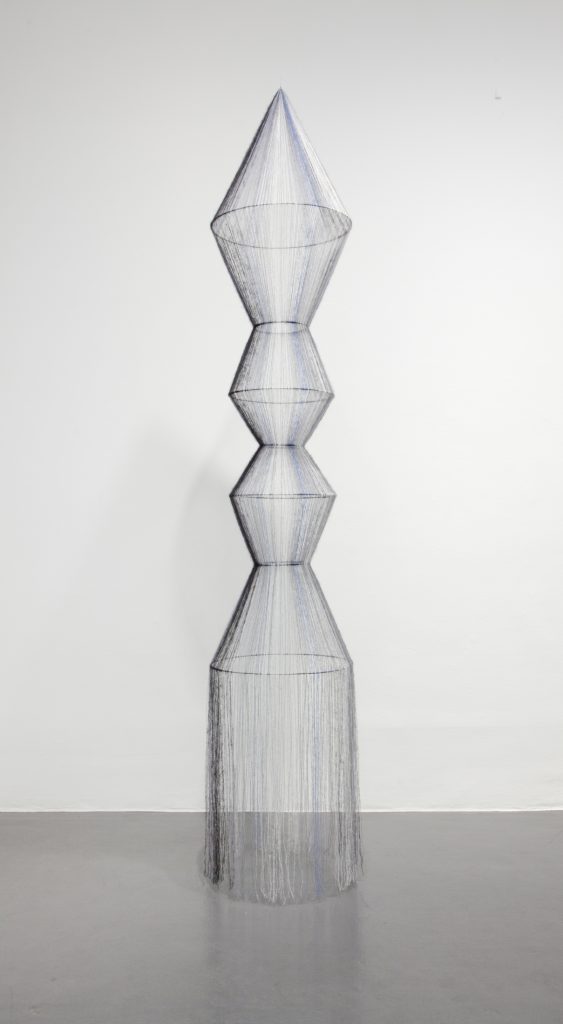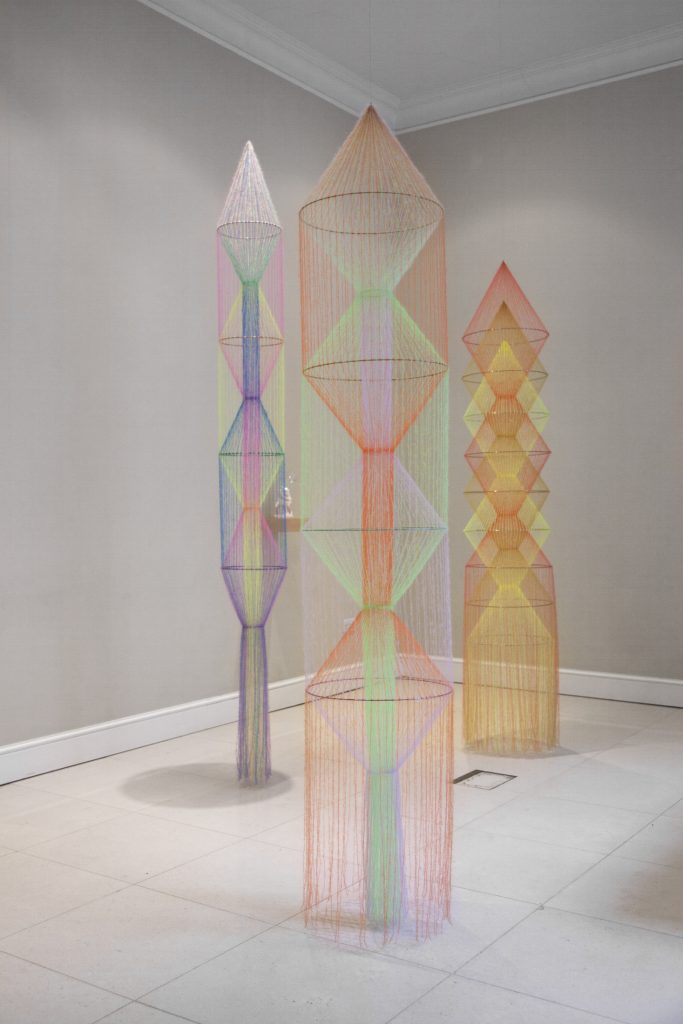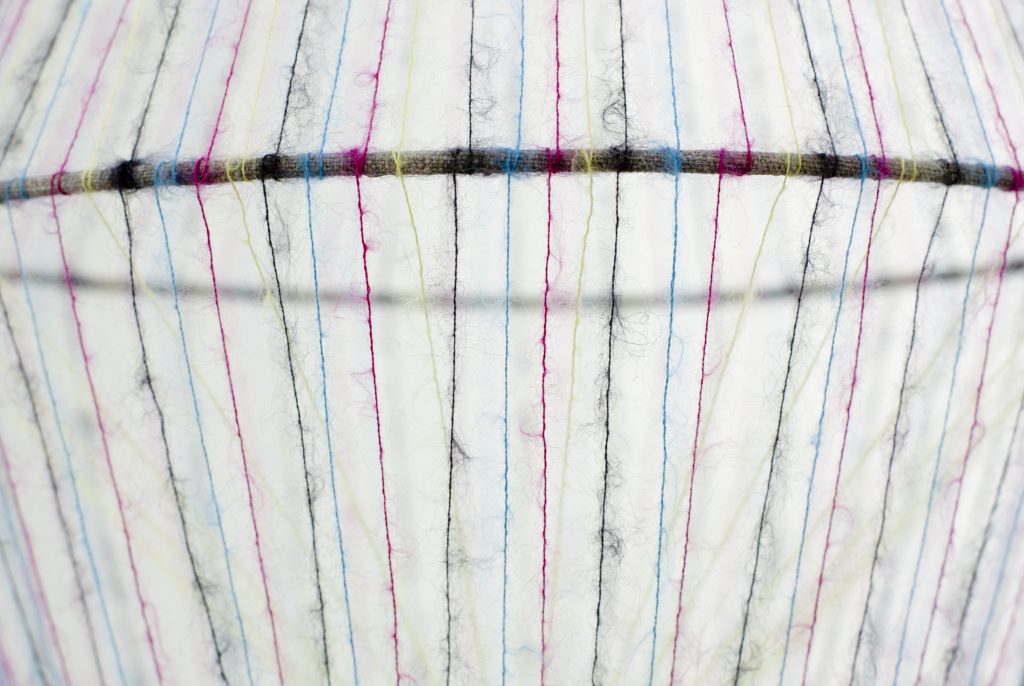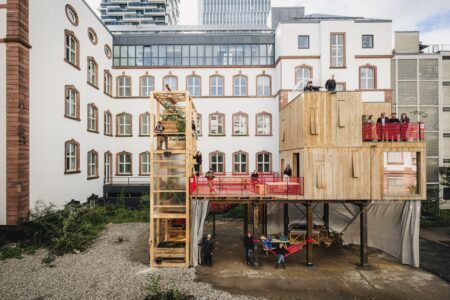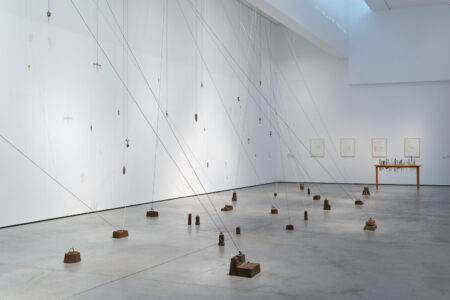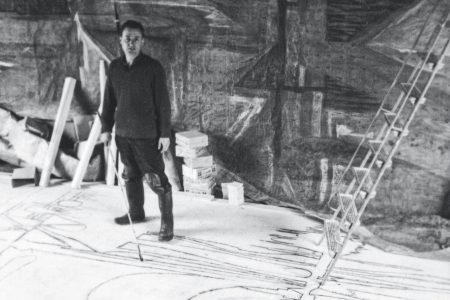
Bella Rune: Creative Contradictions
It’s no surprise that this Swedish artist has a background in both architecture and dance, as her handmade geometric shapes are studies in structural composition and movement. Bella talks to TLmag about her fascination with interfaces, the truth about intuition, and the similarities between yarn and smartphones.
TLmag: Your work looks both delicate and indestructible – what’s the thought behind this tension and paradox?
Bella Rune (BR): The sculptures are not either-or, they’re both: yarn-ness and mirage. I’ve always wanted to break out of the everyday, but I also want to be the everyday. Maybe it’s a generational thing – we are half cyborg, half dinosaur. I seem to move in this way, I have one foot on either side of the digital interface. I want to be where the negotiation is happening. There’s also something about things that can break. For example, concrete can break, and then it’s broken. But my pieces seem to handle outside forces in a different way. If there’s wind they’ll blow, but they’ll return to their original position. They can respond to other forces without being broken, like light.
TLmag: Why do you choose to work primarily with yarn?
BR: I like being the world’s slowest 3D printer! I use mohair, which is very thin but strong. Sometimes I let the ends of the yarn hang loose, and when passers-by move them there is no felting, the way you would get with other wool.
I’ve also created two apps with augmented reality. The first one I did just before Pokémon Go, and I did another one last year when I worked with Garage Museum in Moscow. Yarn and smartphones are kind of similar. They are both these everyday things that are annoying and you kind of hate them, but you can make poetry and magic with them as well.
TLmag: Colour has a big part to play in your work – there’s another heady tension here, this time between natural materials and unnatural hues.
BR: I have always had a very strong relationship to colour. Over the last couple of years, I’ve been interested in where colours really come from – the actual source of the dyeing. All dyes come from somewhere if they’re not completely unnatural. For instance, some candy now has the same red dye as was used for clothes in the 1800s – there are all these different connections to be made. At the same time there’s this horrible limitation. As a human being, you’re a machine that can only see certain nuances – a bird can see much more colour than we can. It can be nice to use colours that stretch our possibilities somehow, to do something that is for the birds or the bees or something else. We live in this double universe. Traditional folklore is part of why we make the choices we do, but so is candy or marker pens. I remember the first time I saw neon – it shook my little child mind. I could feel something else happening to my eyes; it was like a room expanded inside of me. Certain colours like that give us a touch of what the bees and the birds can see.
TLmag: How intuitive, and how studied is your process?
BR: To me, intuition is just knowledge that we haven’t fully unpacked yet. It’s interesting to use it when going into unchartered territories, to do something, then to think about what you have done and why. Part of me feels like a choreographer of space and emotion, but on the other hand, I’m a researcher that wants to get into the history, and these sculptures enable me to do both. At the same time, they act as limitations. It’s almost like Haiku. There’s a system I have to relate to. I have a background in dance, so movement is very present in my work. I think a lot about how we move, how our bodies are in relationship with this work. I started making sculptures that I thought of as performances, they had some kind of action embedded in them. For me, the sculptures are very similar to what a dancer can do. It’s only a body moving, but it can take over a room.
